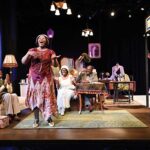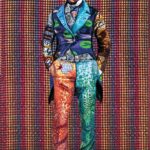But after Smith’s death, Brigham Young reversed the policy, declaring in 1852 that blacks were the unworthy descendants of Cain and could not hold the priesthood, Mormon historian Newell Bringhurst said.
“Brigham Young cites divine sanctification, and that’s pretty hard to refute,” said Bringhurst, who is white and the co-editor of the book “Black and Mormon.”
Although Young’s policy was never considered doctrine, his teachings left the church so entrenched that it was unable to change, even during the civil rights era of the 1960s and despite pressure from inside and outside the faith, Bringhurst said.
“It’s a tragedy in a way,” said Bringhurst, who left the Mormon church partly because of its stance on blacks. “There was this missed opportunity in the 1960s where they could have easily changed.”
Labeled as racist, the church suffered years of repeated drumming in the news media and from people angered by the divisive policy, Wolsey said.
“Every day I was working with people who were highly antagonistic to the church,” said Wolsey, who recalled some schools in the ’60s that refused to compete against Brigham Young University sports teams.
Prior to 1978, Wolsey and Gray spent nearly five years touring the country to answer questions about the church’s position during meetings that often would spark angry, contentious words.
“I said, ‘I am not a racist. I don’t have any racial feelings against the blacks at all. I have a part of my belief that says the blacks can’t hold the priesthood,’” Wolsey said. “Women can’t hold the priesthood either; children can’t. But I said I believe in the church, so I accept it.”
Church statisticians don’t track membership by race, but scholars believe there were less than 3,000 black Mormons in 1978.
Since then, the church has expanded its missionary work in predominantly black nations, including the Caribbean, South America and Africa, where it now claims more than 250,000 members out of 13.1 million worldwide.
There are no blacks in the senior leadership tiers of the Salt Lake City-based church. A black Brazilian, Helvecio Martins, was a member of the Second Quorum of Seventy from 1990-95. He died in 2005.
In Africa, more than 2,000 men serve in local and regional leadership posts, spokeswoman Kim Farah said.
Gray and Wolsey said the change in 1978 was good for all members of the church, not just for blacks.
“It removed an impediment that stood between the brotherhood and sisterhood that needed to be removed,” Gray said. “It has allowed blacks and whites — not just blacks — to be more open about these issues, to embrace one another and to be the Christians that God intended us to be.”
(Associated Press)






